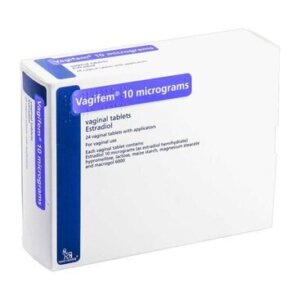 Finding the proper treatment for nodular and cystic acne is a very high priority because otherwise, it can cause significant and irreparable physical damage and emotional distress if not attended to as soon as possible.
Finding the proper treatment for nodular and cystic acne is a very high priority because otherwise, it can cause significant and irreparable physical damage and emotional distress if not attended to as soon as possible.
The more common forms of acne can often resolve by themselves with simple steps such as good skin cleansing routines, over-the-counter lotions and simple lifestyle management. On the other hand, nodular acne requires greater care as well as a higher level of intervention with prescribed medications. You can read more about the features and appearance of nodular acne here.
Nodular acne is characterized by large, inflamed, and painful lesions that form deep within the skin. Treating nodular and cystic acne requires a comprehensive approach to manage both the existing breakouts and prevent future occurrences.
Level 1 – Topical ointments and lotions
Topical medications are commonly used as first-line nodular and cystic treatment. They aim to reduce inflammation, unclog pores, and prevent bacterial growth. Some commonly prescribed topical treatments include:
- Renova (generic active ingredient: tretinoin), which is a derivative of vitamin A. Retinoids are used to treat severe acne. It promotes skin cell turnover by preventing the accumulation of dead skin cells and unclogging pores. This allows the skin’s natural oil-producing glands to function normally and decreases the formation of blackheads (comedones) and spots.
- Antibiotics like Cleocin (active ingredient: clindamycin) or Akne Mycin (active ingredient: erythromycin) can be applied topically to combat bacterial overgrowth in the skin, reducing inflammation and preventing infection. Clindamycin works by attacking the bacteria Propionibacterium acnes, which is associated with the cause of infection in cases of acne. This widespread bacterium feeds on the sebum excreted by the sebaceous glands. Its waste products irritate the sebaceous glands, making them inflamed, and this is the cause of spots. By restricting bacterial numbers, the antibiotics control the inflammation, allowing the skin to heal.
- Benzaclin (active ingredients: the combination of clindamycin & benzoyl peroxide) treats and prevents acne. Clindamycin works to stop bacteria from multiplying and to reduce the number of bacteria, which has anti-inflammatory benefits. Benzoyl peroxide kills bacteria underneath the skin, and helps pores to unclog and shed dead cells.
Level 2 – Oral Antibiotics
Where topical treatments alone are not producing adequate results, doctors can go on to prescribe oral medications. These options target the underlying causes of nodular and cystic acne. The most common options are antibiotics such as Vibramycin (doxycycline HCl) and Minocin (minocycline HCl), which reduce inflammation and kill bacteria. They are typically prescribed only for short periods, in order to prevent the development of resistance.
Level 3 – Inducing cell death in sebaceous glands
Since the action of bacteria on sebum produced by the sebaceous glands is a crucial ignition point in the onset of acne, it has been found that directly affecting the availability of sebum can radically restrict the degree of infection and inflammation. Accutane (isotretinoin), also marketed by the brand name Roaccutane, induces apoptosis (programmatic cell death) in various cells in the body, including the sebaceous glands. It is a potent oral medication reserved for severe nodular and cystic acne cases that have not responded to other treatments. Accutane effectively reduces oil production, prevents clogged pores, and reduces inflammation. However, it comes with severe potential side effects and requires careful monitoring.
Level 4 – Physical Intervention
In addition to medications, several procedures and therapies can aid in the management of nodular and cystic acne:
- Intralesional corticosteroid injections can be administered by a dermatologist, who will directly inject corticosteroid injections at the site of the nodular or cystic acne lesions to reduce inflammation and promote healing.
- Dermatologists can manually extract large, stubborn acne lesions using sterile instruments to remove accumulated sebum and pus.
- Light-based therapies, such as laser and photodynamic therapy (PDT), can target bacteria and inflammation, reducing acne lesions and preventing scarring.
FAQ
What ingredient is best for nodular acne?
Benzoyl peroxide can kill bacteria that cause acne. It also removes oil and dead skin cells, which can clog pores. Benzoyl peroxide can be combined with antibiotics in strengths from 2.5% to 10%.
How do you heal nodular acne fast?
A healthcare provider may recommend cortisone shots to shrink painful or lingering acne nodules. The dermatologist uses a fine needle to inject steroid medication into the nodule. This medication reduces inflammation and speeds up the healing process.
Does retinol help with nodule acne?
Retinol works in several ways to prevent pimples from forming. It exfoliates to remove dirt, dead skin cells, and oil from pores on the epidermis (the skin’s outermost layer).
What pills help nodular acne?
The most common options for treating acne if topical creams or lotions are ineffective are tetracycline (minocycline, doxycycline) or macrolide (erythromycin, azithromycin) antibiotics. Macrolide might be the only option for people who cannot take tetracyclines, such as pregnant women or children under the age of eight.
What antibiotics are used for nodular acne?
Antibiotics can provide relief from painful breakouts of acne. The main options are doxycycline and erythromycin. They reduce the amount of P. acnes bacteria on the skin and lessen inflammation.
















